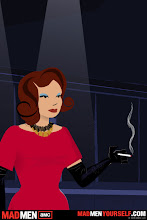
Pearl used to give me little pillow-shaped pastries called kolatches. They were buttery and flaky and the insides oozed with sweet apricot filling. She let me play with her collection of 1950s Barbie dolls (their arms stiff and held straight out, tiny rubber feet pointed up on tiptoes, ready to receive itty-bitty open-toed shoes, faces foreign and ancient-looking with red-mouthed sneers) and didn't even mind if I turned her elaborate bookcase into a doll-sized apartment building – complete with curtains made from Kleenex.
They were beautiful, those books. Hardcover, some old and leathery, smelling of sharp age, the pages a dry yellowy-white like rustly vanilla ice cream. In the fifth grade I tried to read War and Peace, simply based on the fact that it was the most enormous book I'd ever seen. I had a high reading level, my teachers said. But even that couldn't get me through more than a page of complicated Russian names with more letters than the longest word I knew: semisomnambulant. Instead I found a Tennyson poem about a mermaid, and pretended to be an elegant 19th century lady on Pearl's window seat.
Pearl's house was next door to mine; our yards were bisected by an enormous row of blue hydrangeas. My mother always said that she didn't know how Pearl did it – blue hydrangeas were impossible. And she didn't even add lime to her soil, how in the world . . . My mother wondered this every spring like clockwork.
Before we knew Pearl, I loved her house. Before I was even old enough to love any building, I stared at it with childish wonder. My mother would pull me down the sidewalk in the Radio Flyer, its wheels squeaking out a lazy rhythm, and I would reach down to gather the little red-brown berries that collected on the concrete; refuse from the juniper trees that lined the yards on our street. I would collect them in the bottom of the wagon, watching them roll like tiny billiard balls into the corners1. Pearl would usually wave hello, or walk to the edge of the yard to talk with my mother, the two of them swapping what were, to me, the dull pleasantries of adulthood. But Pearl had a lovely lined face that was full of mischievous winks and asides for me – she was rare for an adult, seldom getting impatient or looking exasperated over children. She didn't mind toys in her yard or if a particularly intriguing flower was picked from her pretty gardens. (At age four, I came triumphantly bounding into the kitchen with a grubby fistful of her lovely irises, awash in a beautiful purple that was regal enough for a queen. My mother dropped her coffee cup in horror).
The house was of undetermined age - most likely an early 19th century building, according to my Dad; though how he knew that, I wasn't sure. The entire place was sturdy red brick, and the window frames were carefully painted and maintained white wooden scrollwork. It wasn't especially large, but the structure was rambling, with gables and dormers and an odd carport instead of a garage – very southern, my Dad said.
One of the windows was circular, a little round eye that, I found out later, peeked out from the library. I loved that small window. To me, it was the essence of charm and mystery. My own home contained all square windows, boring shapes that were to be expected in a house. I imagined that if I owned that round window I would lean my chin on the edge and peer out at the world when it was raining, pretending it was a porthole or the glass in a castle while the water ran translucent streaks down the pane.
Pearl's furniture was haphazard, a mix of antique pieces, new-ish sofas and her mother's 1940s kitchen table. She indulged my need for pretty, ladylike things and let me have tea parties in the library with her china cup collection. I was careful down to a science, setting the painted teacups in their matching saucers as delicately as I possibly could. The table I sat at was the most magnificent thing in the house, at least to me. Small and oval, just low enough to the ground for a child, it was dark mahogany, its surface a fairytale carving of knights and ladies, castles and renaissance scenery. An oval pane of glass was fitted perfectly over this carved story, and, best of all – four little stools were tucked underneath, cut with angles and curves that exactly mirrored the shape of the table, so that when they were not in use, they could be cleverly hidden. Someday, Pearl said, she would give it to me, when I was grown up and had a house of my own. But that was something I couldn't even begin to imagine.
